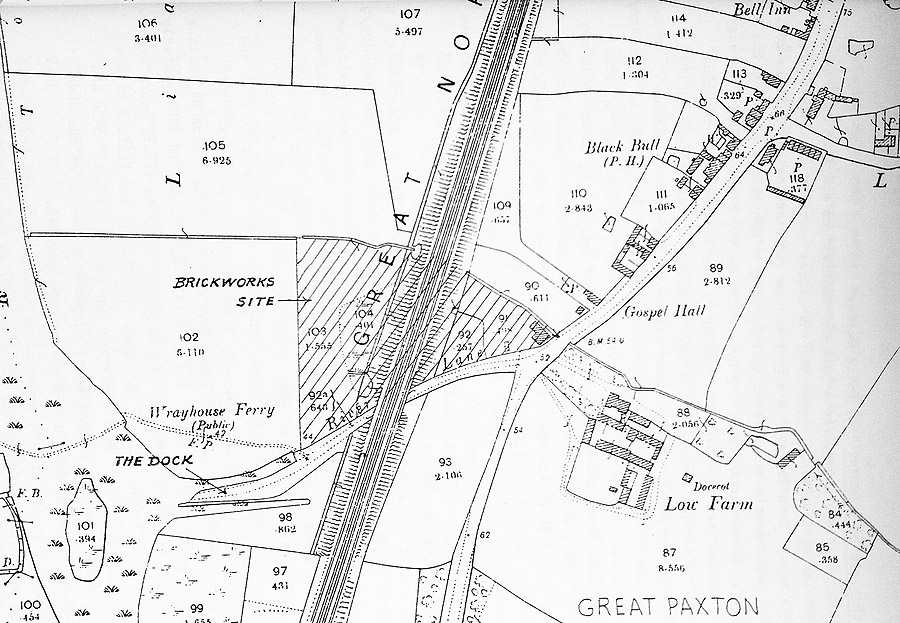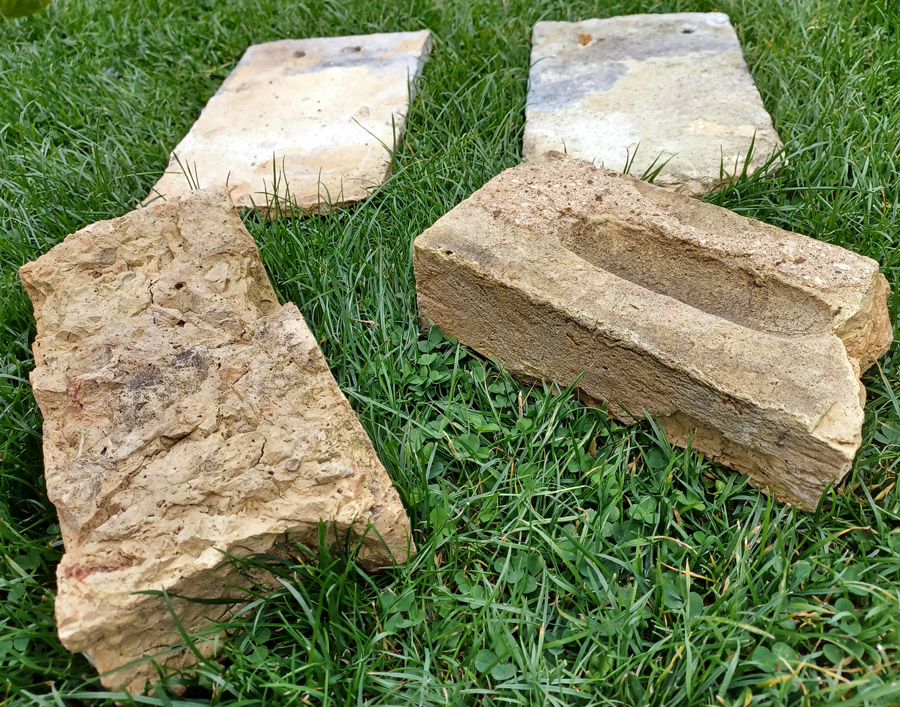
The site of the brickworks marked
on a map from 1888

Do you have any bricks like this
in your garden or even making the fabric of your house, outbuilding,
garden wall etc?
If you live in Great Paxton and have any old yellow bricks or tiles like those in the picture above they are almost certain to have been made here in the village at the brickworks that used to be at the right of River Lane opposite where Ibbetts is. A triangular shaped area now with a bungalow at the tip on the High Street, formerly known as Brick Kiln Close when the works started here no later than 1670. The bricks are readily identifiable due to their many inclusions and irregularity both results of being hand made, this is particularly apparent if they break and you can see the internal structure.
Some of the older buildings, outbuildings, walls etc. in the village are made entirely of these bricks. Even if your house dates from after the works were closed down in 1896 there may be some around, my 1937 house on the High Street had a path to one side in the back garden that had been made by laying these bricks directly on the earth but which had entirely sunk and been forgotten over the years until I started digging them up while gardening! two of these are in the picture. My house is built on the site of demolished much older cottages, so these bricks were probably reclaimed from those older houses.
The railway line cut through the brickworks site when it was built by the Great Northern Railway company (GNR) in the late 1840's, completed in 1850. The clay pits in this area had been worked out by 1800 though it was still used as a brickworks using clay brought from other sites around the village such as pits in the the field to the south of London Lane.

Brick kiln marked on a 1835 map before
the railway
Initially few if any houses would have been made entirely of brick, the bricks were used for footings and to make a hearth and chimney for the fire in an otherwise wooden-framed, wattle and daub structure. Roof tiles were also made here and land drains.
The clay was dug out of the ground and used on site, hand moulded, then dried in sheds before being fired. The works were owned by the Paine family from the early 1800's onwards who also owned the brewery in St. Neots. The last people to work the site were the Andrews brothers, master brick makers, up to when the works were closed down in 1896. The railways had made it more economical to bring mass produced bricks and tiles from much bigger factories further afield, these "imported" products were red rather than the local yellow and were available from 1850 onwards.
Traditional brick making by hand, this film is German and from 1963 but the techniques used in Great Paxton would have been very similar to those seen here
Behind the bricks in the picture are two roof tiles from Great Paxton church replaced in a 2019 renovation. The tiles in particular are quite clearly hand made with many inclusions (close-up at top of page) only somewhat flat and with right-angles at the corners being approximate.
The clay used is known as yellow gault it is characteristic of this region and further south. The brick works were once part of the village commons where on 2 days a year villagers could dig clay to make their own bricks for repairs to houses or for instance for newly weds to make enough for a hearth and chimney for their new home.
Over the years a man-made spoil hill 20-30 feet high built up which was used by village children for sledging down until the 1960’s when Ibbetts’s agricultural merchants was built nearby.

A clay tile from the church roof
removed during the 2019 refurbishment made of yellow gault clay
in the village, this could be anywhere between 130 and 350 years
old, almost a work of art in its own right.

